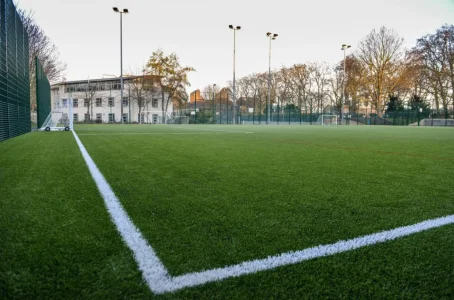
Dive into the green revolution sweeping African football! Discover how stadiums embrace sustainability, from solar roofs to rainwater harvesting, and how these initiatives benefit players, fans, and the environment.
Beyond the Beautiful Game: How Eco-Friendly Football Stadiums are Sprouting Across Africa in 2024
In the vibrant world of African football, passionate fans cheer for their heroes under the scorching sun. But as climate change casts its shadow, a greener revolution is blossoming on the continent. Eco-friendly football stadiums are no longer just a futuristic aspiration; they're becoming a reality, showcasing a commitment to environmental responsibility while enhancing the beautiful game for players, fans, and communities. Follow
free livescore and learn
mobile scores to ensure a greener revolution impacts football nowadays.
From Grassroots to Green Roofs
The shift towards sustainability isn't limited to megastructures. In Rwanda, the Amahoro stadium, built with recycled materials and powered by solar energy, is a hope for community-driven sports development. Similar initiatives are sprouting across the continent, proving that sustainability can be woven into the very fabric of the sport, regardless of scale.
Harnessing the Sun's Power
Solar power is becoming the star player in Africa's eco-friendly stadiums. The Moses Mabhida Stadium in South Africa, a host during the 2010 World Cup, boasts a translucent roof that allows natural light to filter through while generating solar energy. Similar initiatives are underway in Senegal, where air quality sensors powered by solar energy are installed in stadiums to monitor and improve the environment for players and fans.
Rainwater: A Liquid Asset
In regions facing water scarcity, stadiums are learning to harvest the skies. The Stade Leopold Senghor in Senegal collects rainwater for irrigation and cleaning purposes, while the National Stadium in Botswana boasts a rainwater harvesting system that meets 20% of its water needs. These initiatives conserve precious resources and demonstrate how eco-friendly practices can lead to cost savings and resilience.
Beyond Bricks and Mortar
The green revolution extends beyond the physical stadium walls. Many clubs are partnering with local communities to plant trees, organize clean-up drives, and raise awareness about environmental issues. For example, the Mamelodi Sundowns Football Club in South Africa has launched a comprehensive sustainability program that includes tree-planting initiatives and educational workshops for fans.
Challenges and Opportunities
While the progress is exciting, challenges remain. Overcoming challenges such as securing funding, gaining technical know-how, and raising awareness is crucial, yet the rewards are immense. Eco-friendly stadiums have the potential to draw international investments, enhance health and well-being, and bolster community pride. Moreover, they can serve as living examples of how sustainability and development can go hand-in-hand, inspiring future generations to build a greener future for African football.
A Green Victory: How Eco-Friendly Stadiums are Changing the Game for African Football and Its Future
As the crowd's roar fills the air in eco-friendly stadiums across Africa, it's not just the players on the field winning. The environment, the communities, and the future of the beautiful game itself are all emerging as champions. This green revolution is more than just a trend; it's a testament to the continent's unwavering spirit and commitment to building a sustainable future for future generations. So, the next time you watch a match under the African sun, remember that the actual game is being played not just on the field but in the stands, in the communities, and in the hearts of those building a greener future for African football.
